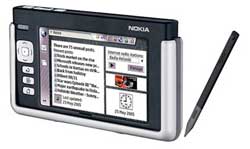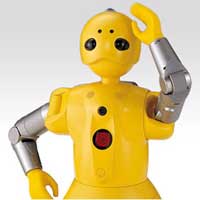Quietly but swiftly, Linux is rapidly spreading across an increasing number of services and devices, from email to automobiles.
 |
Source: BW Online |
A revolution is quietly sweeping through the technology realm, and its name is Linux. This free operating system on the Internet is gradually infiltrating a variety of product types, causing significant revenue losses for the giant Microsoft within the personal computer sector.
You may have never downloaded or tried Linux before. Perhaps you are not ready to turn your back on Bill Gates and his company. You might even be indifferent about what open-source means. However, you will undoubtedly be part of this revolution, sooner or later.
Linux is no longer confined to distant servers from your daily life. It and other open-source software are increasingly controlling familiar devices and technologies – from digital video recorders like TiVo to Motorola mobile phones. Do you surf the web frequently? The Firefox browser is gaining popularity! In fact, the number of websites running on Linux and open-source software like Apache Web Server or MySQL is quite substantial.
For home electronics manufacturers, the appeal of open-source is clear. Unlike computers, the software used in household appliances lacks standardization. When they only need a simple operating system, Linux is readily available without waiting for a special version of Windows.
Similarly, for mobile phones, Linux can provide a powerful operating system where the development community can freely write games and applications.
One factor that cannot be overlooked is cost. Although you still have to spend money when using Linux (for training, service provision, and technical support), it is undoubtedly much cheaper compared to proprietary software.
The only issue: All the analyses above belong to technology experts. What about users? The vast majority remain hesitant and view open-source as unreliable, difficult to maintain, and even potentially harmful.
Therefore, do not expect mobile phone manufacturers to quickly promote products labeled “Linux Inside” overnight.
On the Web
The web is perhaps where users most fully enjoy the benefits of open-source technology. The Apache Web Server is running on over 50 million sites. The MySQL database has more than 8 million “live” databases, most of which belong to Internet companies. Three-quarters of all websites are using the open-source programming language PHP – a replacement for Java.
Thus, it is no surprise that Firefox, the open-source browser developed by the Mozilla Foundation, is taking off. Although it faces competition from Microsoft’s Internet Explorer, Firefox has achieved 140 million downloads (from November 2004 to now).
Currently, Mozilla is researching an email application called Thunderbird. Still in its testing phase, Thunderbird has been downloaded a total of 21 million times.
TiVo
 |
Source: BW Online |
Eight years ago, TiVo began integrating Linux into its first digital video recorder. At that time, it was such a radical idea that TiVo even hesitated to announce it. The majority of TiVo purchasers were unaware that Linux was inside.
Using Linux has allowed TiVo to save a significant amount of time and money in refining their products and services. Moreover, TiVo’s engineering team can fix bugs and updates immediately without having to rely on software vendors.
The TiVo model has been emulated by competitors. Sony and many other companies will introduce Linux-based digital video recorders in the coming months.
Wireless Routers
You probably don’t have the luxury of time to think about what kind of software is inside your wireless router. You simply plug it in, turn on your laptop, and it just works. But like most other devices, a router also has an operating system, and for companies like Linksys, using open-source allows them to fully focus on their core strengths – marketing, design, and performance.
Mobile Phones
 |
Source: BW Online |
Smartphones – high-end phones retailing for over $300 – account for only a small fraction of the billions of phones sold this year. However, it is one rare field where Linux has outperformed Microsoft. Despite fierce competition from Symbian and Microsoft, Linux was chosen by Motorola for its new Razr and Rokr lines.
A sweet victory, but the biggest challenge now is how to get every other mainstream phone to use Linux.
Nokia Tablet
 |
Source: BW Online |
For those wanting a powerful wireless Internet access device in the palm of their hand, Nokia has launched the 770 Internet Tablet with Linux installed inside. This is a noteworthy event, not only because Nokia is the world’s number one mobile phone manufacturer, but also because Nokia owns nearly 50% of Symbian, a company whose operating system is intensely competing with Linux and currently dominates the mobile OS market.
Automobiles
More and more car models are being equipped with operating systems. Many manufacturers have chosen Linux to handle important tasks, such as anti-lock braking systems. DaimlerChrysler’s diagnostic system, named “StarScan,” is also based on Linux, although the more premium Mercedes brand still uses proprietary technology from Microsoft.
 |
Source: BW Online |
Some open-source sites are also reporting that BMW plans to replace Windows with Linux for iDrive, an infotainment system that has been criticized for its shortcomings. A representative from BMW declined to comment on this information, but if true, it would be a significant victory for the Linux penguin.
Mitsubishi Robot “Osin”
Finally, for those who are truly obsessed with Linux: An operating system that can give you a hug, or at least keep an eye on your house while you’re away. Wakamaru is a home-monitoring robot created by Mitsubishi, capable of downloading information from the web and relaying it to family members. This robot can recognize 10,000 words and alert its owner in case of an intruder.
Heaven’s Will



















































